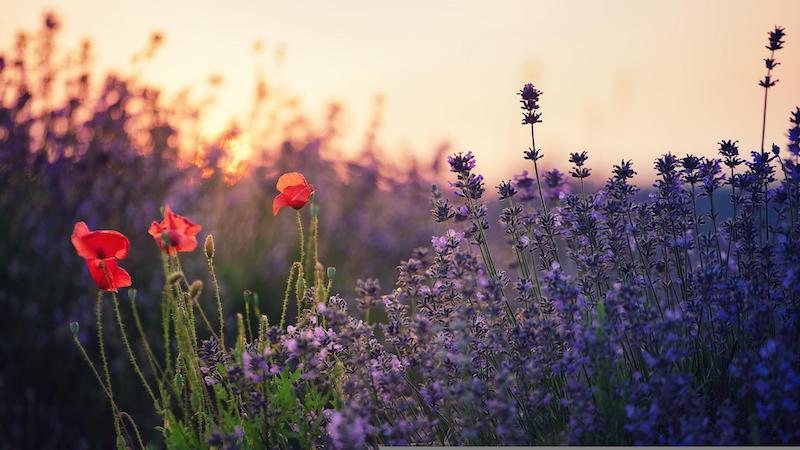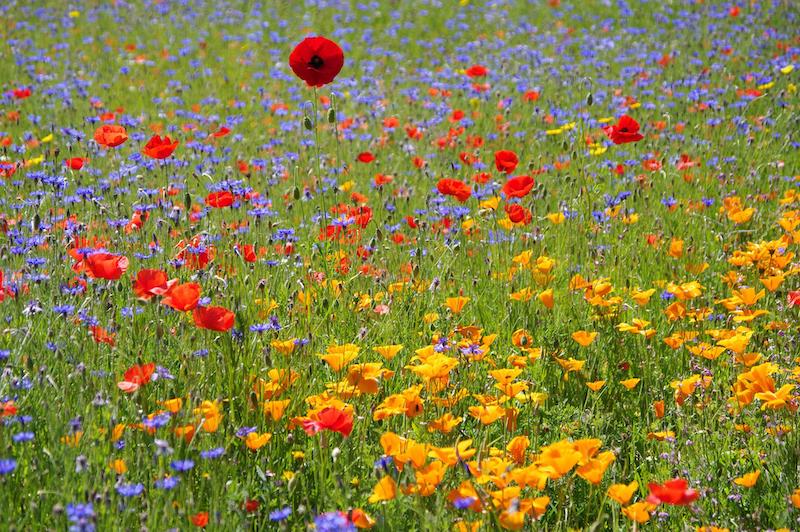Poppies make beautiful additions to the late spring garden. Their flower petals are saturated in the colors of the upcoming summer season. Planting Poppies is an easy and effective way to naturalize a large area or add a pop of color to a small space. Perennial varieties that will regrow from year to year include Oriental Poppies and Icelandic Poppies. Annual varieties such as California Poppies and Breadseed Poppies are heavy self-sowers that can perform like a perennial by reseeding year after year.
The best time to plant container-grown Poppies is in early spring as soon as they appear in the nurseries. Most of these plants will be perennial. Annual Poppies are best grown from seed, which is planted late in the summer or fall. Exposure to cold over winter will encourage quick germination in the spring as soon as the weather warms.

What You Need To Plant Poppies
- Shovel or transplanting spade
- Compost for mulching
- A location in full sun and soil that is not too fertile
- Hose or watering can
- Hand pruners
- Small head rake like a shrub rake
Where to Plant Poppies
All Poppies require lots of sun and soil that is not too fertile. Well-draining soil is also a must. Poppies do not like to spend time in standing water and will quickly die of root rot. The soil should be deep enough for the taproots of Poppies to establish.

Poppy Spacing
Poppies that are container grown should be planted about 1-2 feet apart on center to allow for good air circulation around the plants. Poppies grown from seed can be planted a bit closer: 8-10 inches on center will provide a dense planting to fill in any area quickly. Poppies generally do not require extra support or staking to remain upright all season. Planting multiple plants of the same color or species will give a punch of drama and color. Poppies can spread by seed no matter if they are perennial or annual. Perennial plants will also spread by underground rhizomes, which can be divided.

Steps To Plant Poppies
Step 1 - Dig a hole that is as deep and twice as wide as the pot the plant was grown in.
Step 2 - Carefully take the plant out of the pot and tease out and loosen any roots that are circling the root ball.
Step 3 - Back fill the hole and gently firm down around the root ball to eliminate any air pockets.
Step 4 - Gently water around the plant's root zone until a puddle forms. Let the water soak in and then water one more time.
Step 5 - Mulch lightly with organic compost, shredded leaves or arborist chips around the base of the plant to retain moisture in the soil.
Step 6 - Carefully prune away any damaged leaves or stems from the transplanting.
Step 7 - Seed-grown Poppies need to be sown in the late summer or fall.
Step 8 - Lightly rake the area where you want to sow the seeds
Step 9 - Spread a thin layer of compost over the top of the seeds and firm in well so the seeds make contact with the soil.
Step 10 - Water in the area with a very fine sprinkler head so the seeds are not disturbed.
Step 11 - Resume watering the new plants in the spring as they germinate.
Transplanting Poppies
Perennial Poppies may need to be divided after 3-4 years. Dividing up the plant clumps will help to rejuvenate the plant and increase your plant stock. The taproots on Poppies make dividing and transplanting a little bit more difficult. Dividing is best done in the late summer so the plants will have the fall and winter to establish their roots. Often when the taproots of Poppies are disturbed, the plant may take a season or more to rebloom. Be patient with the Poppies. As long as the foliage growth seems normal and healthy, the plant will eventually bloom again.
 |
Author Robbin Small - Published 7-26-2022 |
